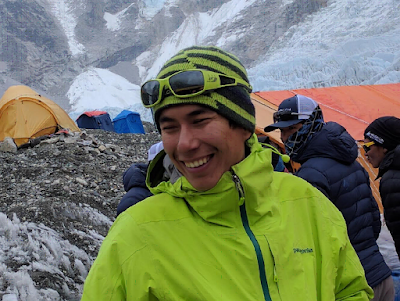Climbing Expedition Pullouts from Everest 2021
Climbing Expedition Pullouts from Everest 2021
The pullout of expeditions from Everest with the lame excuse that there were too many parties at EBC spreading COVID, raises some serious questions.
Let's review how COVID is dealt with in medicine, and compare this with how it's managed by professional climbing expeditions:
1. You don't take healthy people into a possibly contaminated area. As an example, it is common practice that for open joint cases such as a total knee replacement, these are never performed in operating rooms where bowel cases have been in recently. (You don't want intestinal bacteria in your new joint...)
The first mistake made would have been to even hold an Everest expedition in 2021. By April 1, in India, the curve had an unmistakably steep slope that peaked on April 24. It was obvious that Nepal would follow the same trend, and yet expeditions proceeded.
4. Who pays for this mess? As mentioned above, Medicare, followed by all other insurance companies in the US will NOT reimburse hospitals for expenses incurred after an infection. But note the low penalty percentages (1-1.9%)because hospitals have implemented proper procedures.
I suspect before pulling out, that these expedition outfits weighed this option, and are under the belief that their customers will be reimbursed by their trip insurance, while they take their money home.
5. If a patient at a US hospital contracts an infection, who is liable? This is a thorny question that has been the source of many lawsuits. The usual people to blame are the attending physician or surgeon, the nursing staff, and of course, the hospital. In the US, it all comes down to who pays for the complication. Neither the patient himself, nor the hospital next door ever get the blame, by the way.
In mountaineering, legal issues are still a rarity, but COVID may allow lawyers to cross the line into this arena.
Recently, the French government decided to pursue lawsuits against Air France and Airbus for the accident in Brazil in 2009. Arguments will be that the pilots flew the Airbus into a thunderstorm, and that once complications ensued from a faulty plane, they could not handle it and crashed. This sounds eerily similar to how certain companies have behaved at Everest.
And what about long-term COVID complications? If a climber has long term COVID complications from such an expedition, who will pay for these?
Did the expedition outfit create a shield company to prevent lawsuits such as these? Are customers even aware that these things go on?
Lastly, what about the Sherpas and porters who have been infected. Who is covering for their expenses or for losses in their families?
5. Returning home. In medicine, we also have strict protocols in place as to how a patient is returned home after a procedure, whether the patient will require home supervision, and who pays for all this.
According to the US Embassy in Nepal website all flights are closed out of Nepal until May 31. Who is going to pay for the lodging of the expedition customers after they return to KTM? If a customer contracts COVID in KTM, who is responsible? Is it the expedition? The hotel? The client? All this seems to be a minefield from the legal viewpoint!
6. Will we ever know the truth? In medicine, every time there is a bad outcome, it is thoroughly investigated with thousands of pages of reviews from the hospitals themselves, lawyers, and expert witnesses. The system is far from perfect, but at least there is an attempt to find out what caused the accident. This is similar in aviation.
The expedition outfits are playing along too! And so we are in the realm of disinformation and fake news. We will not know why they are really pulling out.
But one thing is for certain: Blaming parties at base camp (which I'm sure are thrown by the Russians and that everybody usually goes to) is a pretty lame excuse!









Comments
Post a Comment